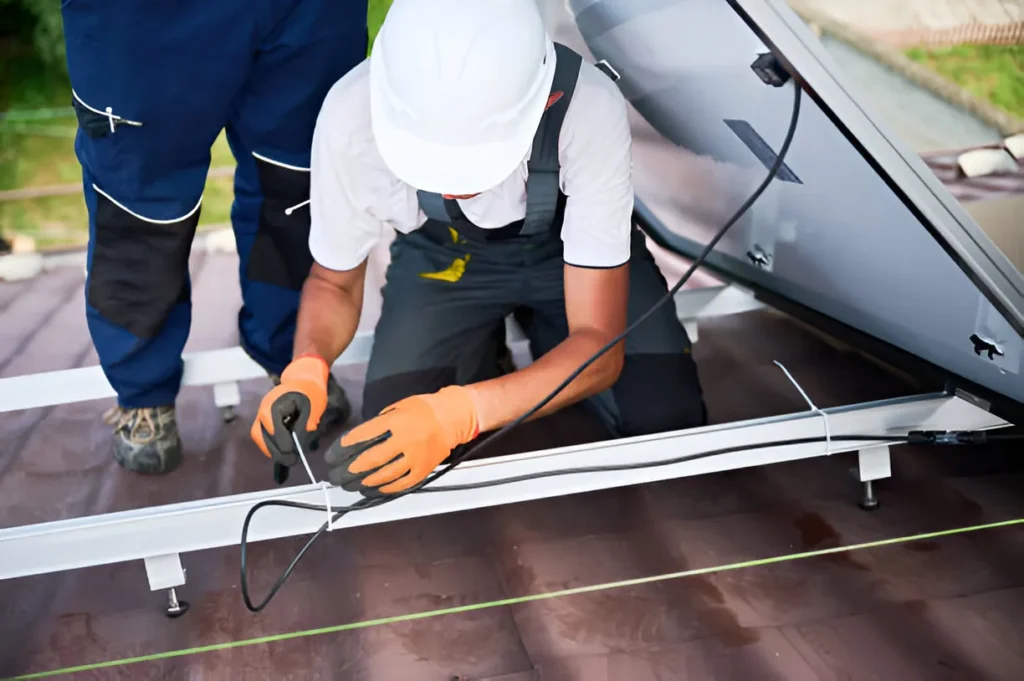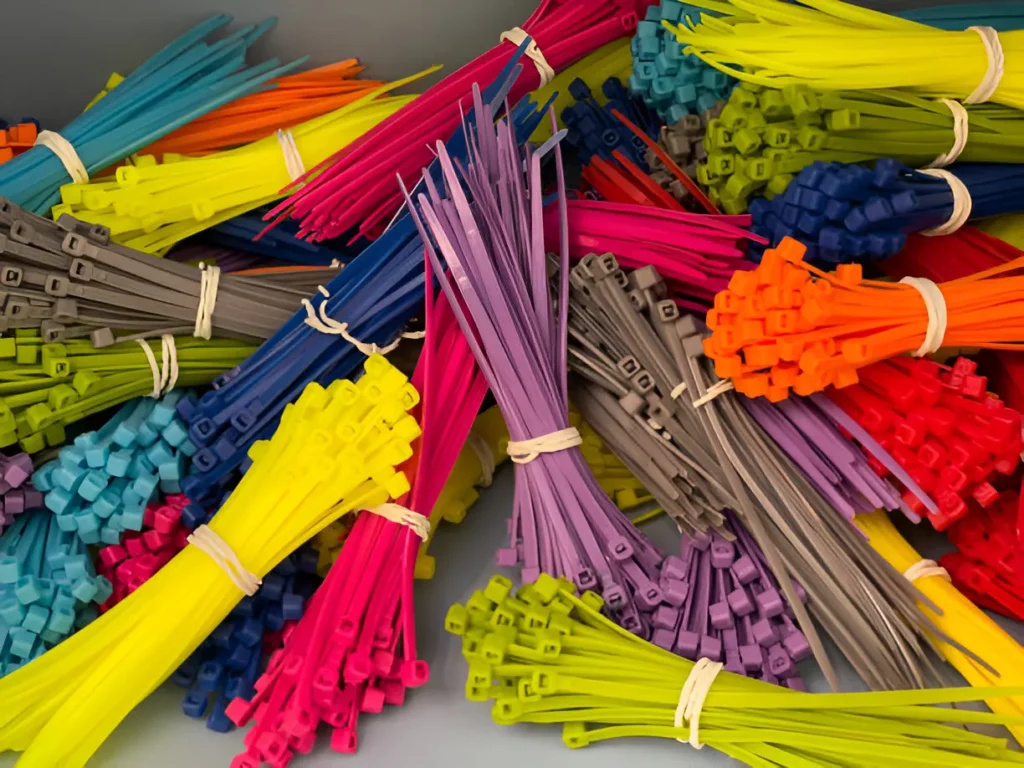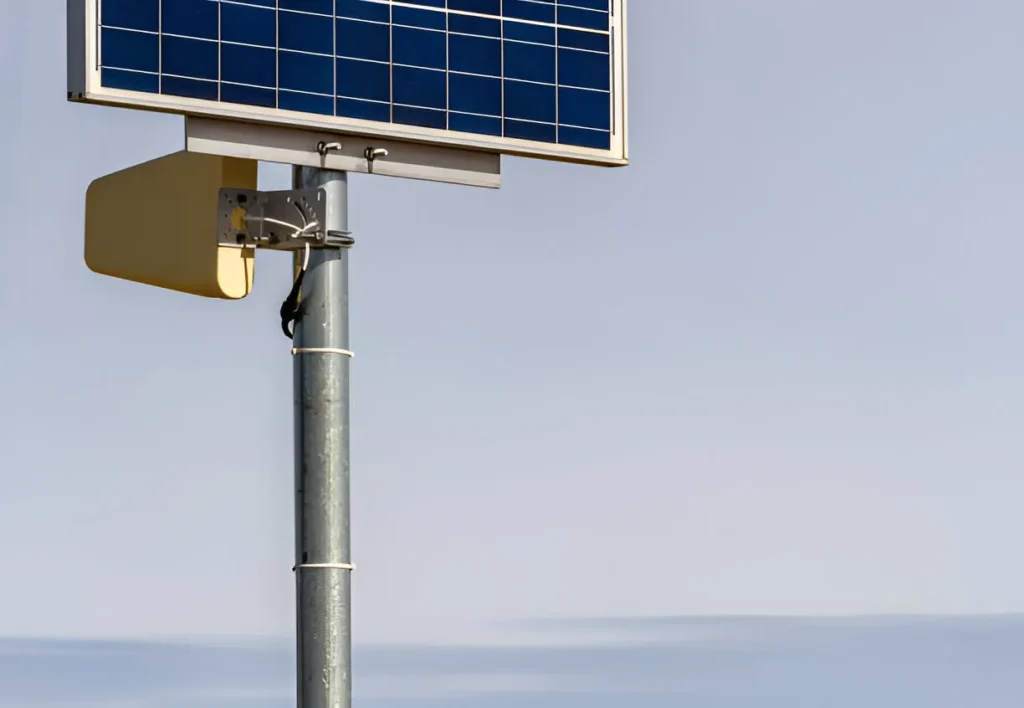What are industrial cable ties
Have you ever wondered how to keep cables organized and secure in industrial settings?
Industrial cable ties, also known as zip ties, are versatile fastening devices designed for bundling, securing, and managing cables and wires. These ties come in various sizes, materials, and strengths to cater to different application requirements.
In this blog post, we’ll explore the world of industrial cable ties, their types, characteristics, and diverse applications across industries.
What are industrial cable ties?
Industrial cable ties, also known as zip ties or tie wraps, are versatile fastening devices used in various industries for bundling, securing, and organizing cables, wires, and other objects. Made from durable materials like nylon or stainless steel, they are designed to withstand harsh environments and heavy-duty applications.
These ties feature a flexible strap with a locking mechanism at one end, allowing them to form a secure loop around the items being fastened. They come in different lengths, widths, and tensile strengths to accommodate various bundle diameters and load requirements.
Industrial cable ties offer several advantages over traditional fasteners. They are lightweight, easy to install, and require no special tools, making them ideal for quick and efficient cable management. Their strong grip prevents slippage and ensures a reliable hold, even under vibration or movement.
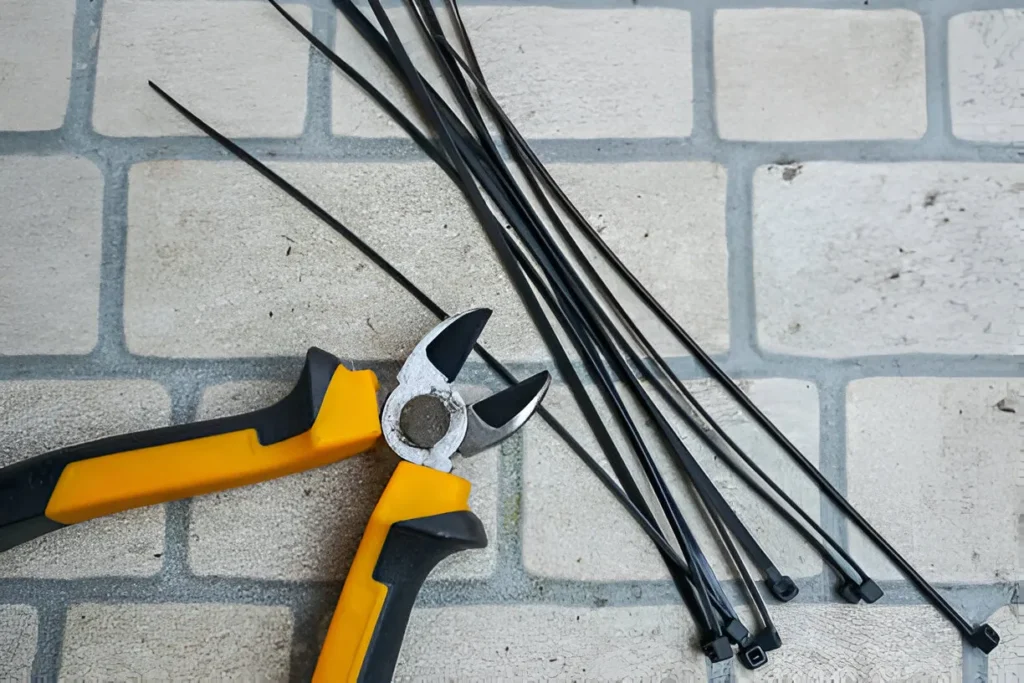
Material of industrial cable ties
Industrial cable ties are manufactured using various materials to cater to different application requirements and environmental conditions. The choice of material determines the tie’s strength, durability, temperature resistance, and chemical compatibility.
One of the most common materials used for cable ties is nylon 6/6, a strong and versatile polymer. Nylon 6/6 ties offer excellent tensile strength, resilience, and resistance to abrasion, chemicals, and UV radiation. They perform well in a wide temperature range, making them suitable for both indoor and outdoor applications.
Stainless steel is another popular option for industrial cable ties, particularly in harsh environments. Stainless steel ties provide superior strength, corrosion resistance, and heat resistance compared to plastic ties. They are ideal for applications involving extreme temperatures, heavy loads, or exposure to corrosive substances.
Other materials used for cable ties include polypropylene, which is lightweight and economical, and polyethylene, known for its flexibility and moisture resistance. Specialty materials like ETFE (ethylene tetrafluoroethylene) and ECTFE (ethylene chlorotrifluoroethylene) offer enhanced chemical resistance and high-temperature performance for demanding industrial applications.
Types and characteristics of industrial cable ties
Self-locking cable ties
Self-locking cable ties, also known as standard cable ties, are the most common type used in industrial applications. They feature a one-piece design with a flexible strap and a locking mechanism at one end. The strap is inserted through the locking head, creating a secure, permanent loop around the bundled items.
Once the tie is tightened and the locking mechanism engages, it cannot be loosened without cutting the strap. Self-locking ties provide a strong, reliable hold and are suitable for a wide range of bundle diameters. They are quick and easy to install, making them ideal for efficient cable management in various industries.
Adjustable cable ties
Adjustable cable ties, also referred to as releasable or reusable ties, offer more flexibility compared to self-locking ties. They feature a two-piece design with a separate locking mechanism that allows the strap to be loosened or tightened as needed, without damaging the tie.
This adjustability makes them ideal for applications where cable bundles may need to be modified or expanded in the future. Adjustable ties are commonly used in temporary installations, prototype development, or in situations where easy access to the bundled items is required.
High temperature/chemical resistant cable ties
High temperature and chemical resistant cable ties are designed to withstand extreme environmental conditions. These ties are made from specialized materials like ETFE, ECTFE, or heat-stabilized nylon that can endure elevated temperatures, often exceeding 150°C (302°F).
In addition to temperature resistance, these ties also offer excellent chemical resistance, making them suitable for use in corrosive environments or in the presence of harsh chemicals. They are commonly used in industries such as automotive, aerospace, and chemical processing, where reliable performance under challenging conditions is critical.
How strong are industrial zip ties?
Industrial cable ties, also known as zip ties, are designed to provide a reliable and sturdy fastening solution for a variety of applications. The strength of these cable ties is determined by a variety of factors, including material, width, thickness, and tensile strength rating.
Tensile strength, measured in pounds (lbs) or Newtons (N), indicates the maximum load a cable tie can withstand before breaking. Industrial-grade cable ties typically have tensile strengths ranging from 18 lbs (80 N) for lightweight ties to 250 lbs (1,112 N) or more for heavy-duty options.
The material used in the construction of industrial zip ties plays a significant role in their strength. Nylon 6/6, a common material choice, offers excellent tensile strength and durability. Stainless steel ties provide even higher strength ratings, making them suitable for the most demanding applications.
The width and thickness of the tie also contribute to its overall strength. Wider and thicker ties generally have higher tensile strengths compared to narrower and thinner ones. This allows them to handle heavier loads and withstand greater forces without breaking.
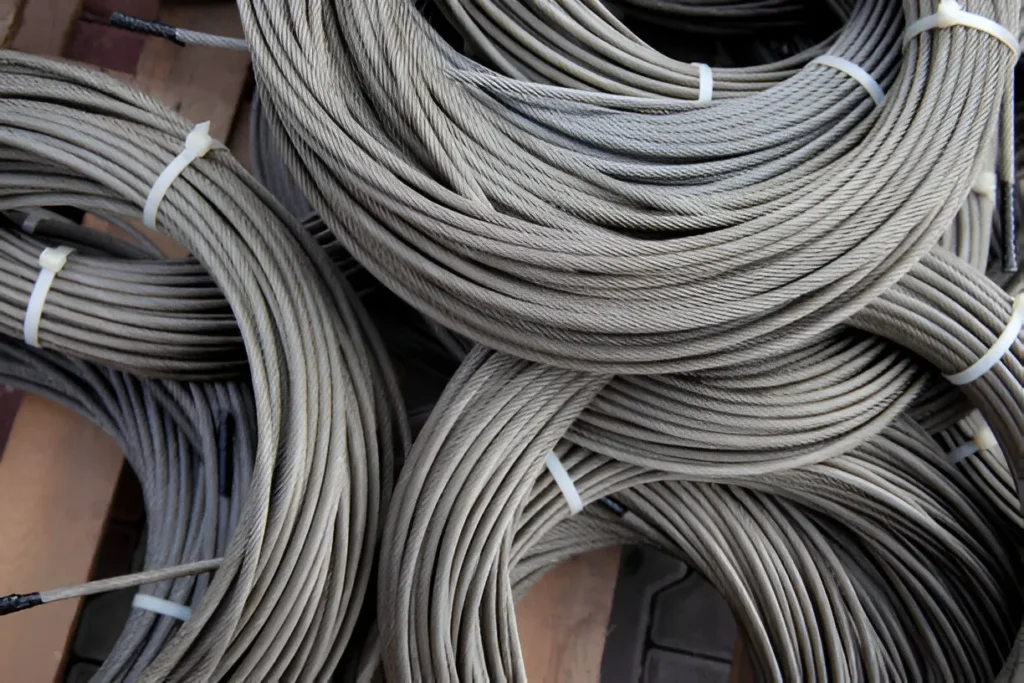
Application areas of industrial cable ties
Industrial cable ties find extensive use across various sectors due to their versatility, strength, and ease of installation. These fastening solutions play a crucial role in organizing, bundling, and securing cables, wires, and other components in a wide range of applications.
- In the electrical and telecommunications industries, cable ties are indispensable for managing complex wiring systems. They help in routing and bundling cables, ensuring a neat and organized installation while preventing tangles and damage. Cable ties also assist in maintaining proper cable spacing and minimizing electromagnetic interference.
- The automotive industry relies heavily on cable ties for wiring harness assembly and cable management within vehicles. These ties secure cables and wires in place, protecting them from abrasion, vibration, and heat exposure. They also contribute to weight reduction and space optimization in automotive applications.
- Construction and infrastructure projects employ industrial cable ties for securing reinforcement bars, pipes, and conduits. Ties are used to bundle and fasten cables in buildings, bridges, and tunnels, ensuring a safe and efficient installation process.
- In the aerospace and marine sectors, cable ties are used to route and secure wiring in aircraft, ships, and offshore structures. These ties must withstand harsh environmental conditions, including extreme temperatures, humidity, and exposure to chemicals, making high-performance materials like stainless steel or heat-stabilized nylon essential.
- Manufacturing and packaging industries utilize cable ties for various purposes, such as bundling and securing hoses, attaching tags or labels, and fastening products during transportation. The food and pharmaceutical industries rely on cable ties made from FDA-approved materials to ensure compliance with stringent hygiene and safety regulations.
In Conclusion
Industrial cable ties are essential tools for efficient cable management and organization across various industries. Their strength, durability, and versatility make them indispensable in ensuring the safety, reliability, and aesthetics of electrical and mechanical systems.
When selecting industrial cable ties, consider factors such as material, tensile strength, and application requirements to ensure optimal performance.
Explore the wide range of industrial cable tie options available to find the perfect solution for your cable management needs.

